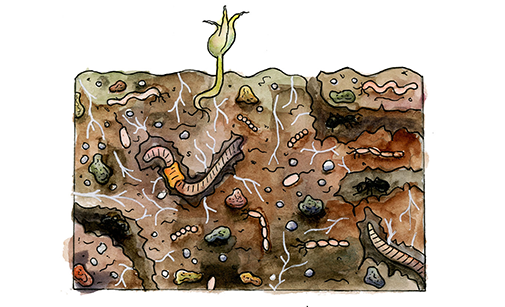
Take a walk outside. Get some fresh air. What do you notice around you?
Buildings, trees, and the sky may be on your list, but did you take a moment to consider the world beneath your feet? If you didn’t, you’re not alone. According to Andrea Basche, a soil and water sciences researcher at the University of Nebraska Lincoln, who spoke in an interview with Science Friday, “We give a lot of attention to water pollution and air quality. But infrequently, do you hear about the imperative [importance] of soil.”
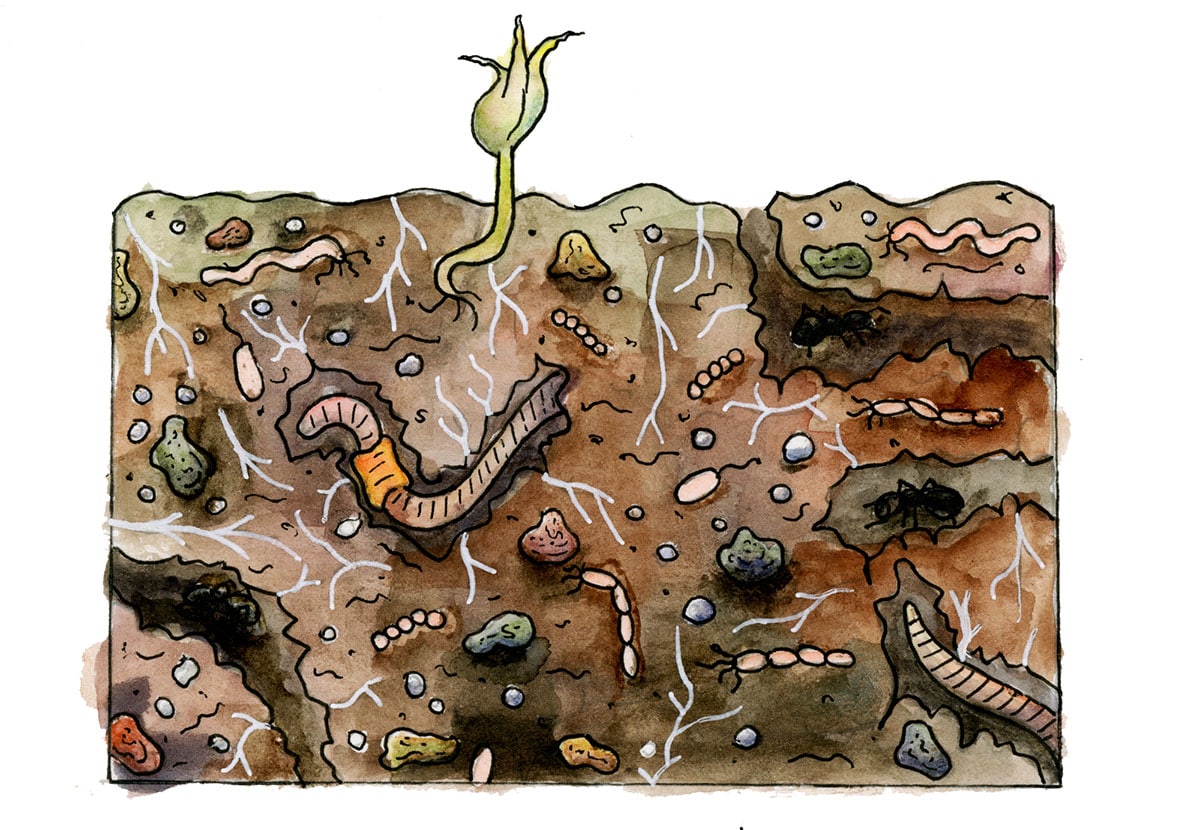
That stuff beneath your feet (or next to the concrete sidewalk) is called soil. This activity is focused on the soil that supports the ecosystems. To learn more about it, you’re going to get dirty investigating different soil types, then you will engineer soil for a specific function and apply your knowledge to the impact of our changing climate on soil ecosystems.
This resource was created as part of the Science Friday Educator Collaborative. If you are implementing this in the classroom, please check out the Educator’s Guide and folder of worksheets and presentations.
What Is Soil?
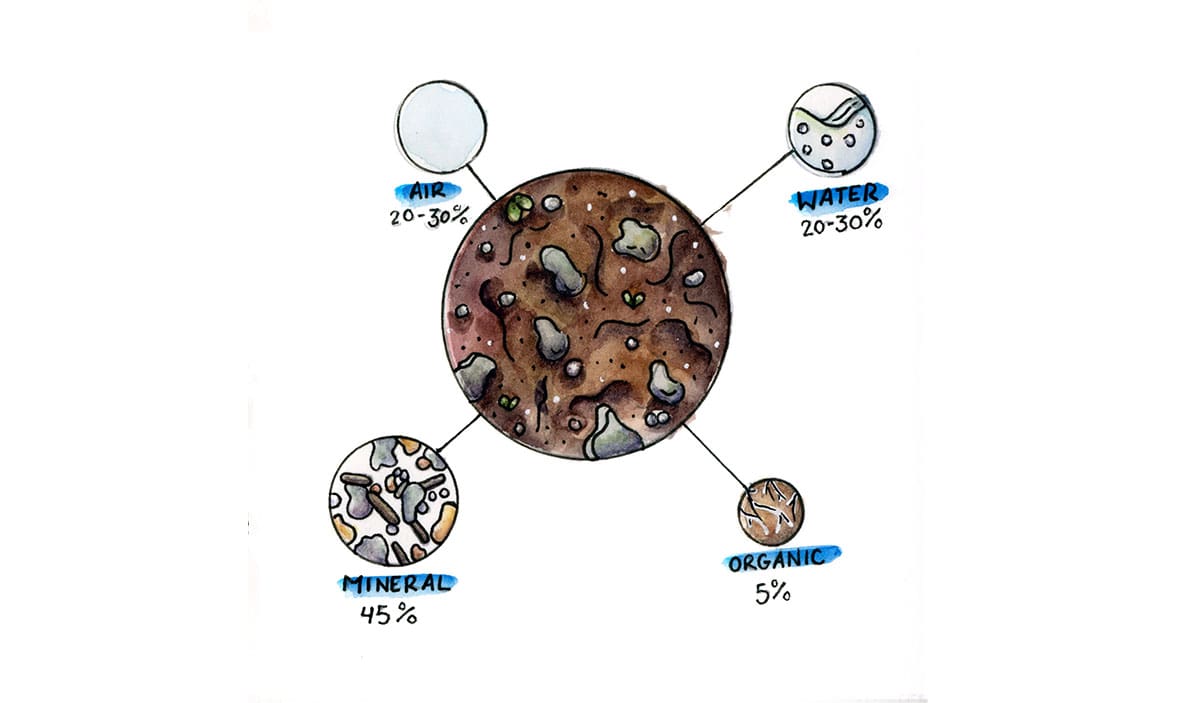
Soil is a mixture of:
- Different mineral particles
- Decomposing plant material (organic matter)
- Air
- Water
All of those different soil components form a loose structure or matrix that hosts an entire ecosystem! In addition to the mineral components and organic matter, soil is the habitat of many microbes, fungi, and insects—there are whole food webs in the soil! The health of the soil ecosystem needs to be maintained for microbes and insects to live in it and plants to grow in it.
Soil is everywhere, but not all soil is the same. The components and characteristics of soil vary between locations. For example, if you collect soil near a river, you might expect it to have more sand or less fungus than if you collect soil in a hilltop forest. Let’s look more closely at the components of soil to better understand the characteristics of the soil and the different roles it can play in various locations.
Soil Texture Investigation
Soil texture can determine a soil’s ability to serve different functions in the environment, for example some soil textures might be good for root growth while other soils might be good for soaking up rainwater after a storm. These functions are important to ecosystems and how humans interact with the soil in their environment. The best uses for each soil type can be determined based on its texture and components.
WARNING: Prepare for dirty hands!
Click the link to create a copy of the Soil Investigation Worksheet.
Prepare: Collect And Observe Soil
The first step for investigating soil texture and components is choosing and obtaining a sample of the soil you want to investigate.
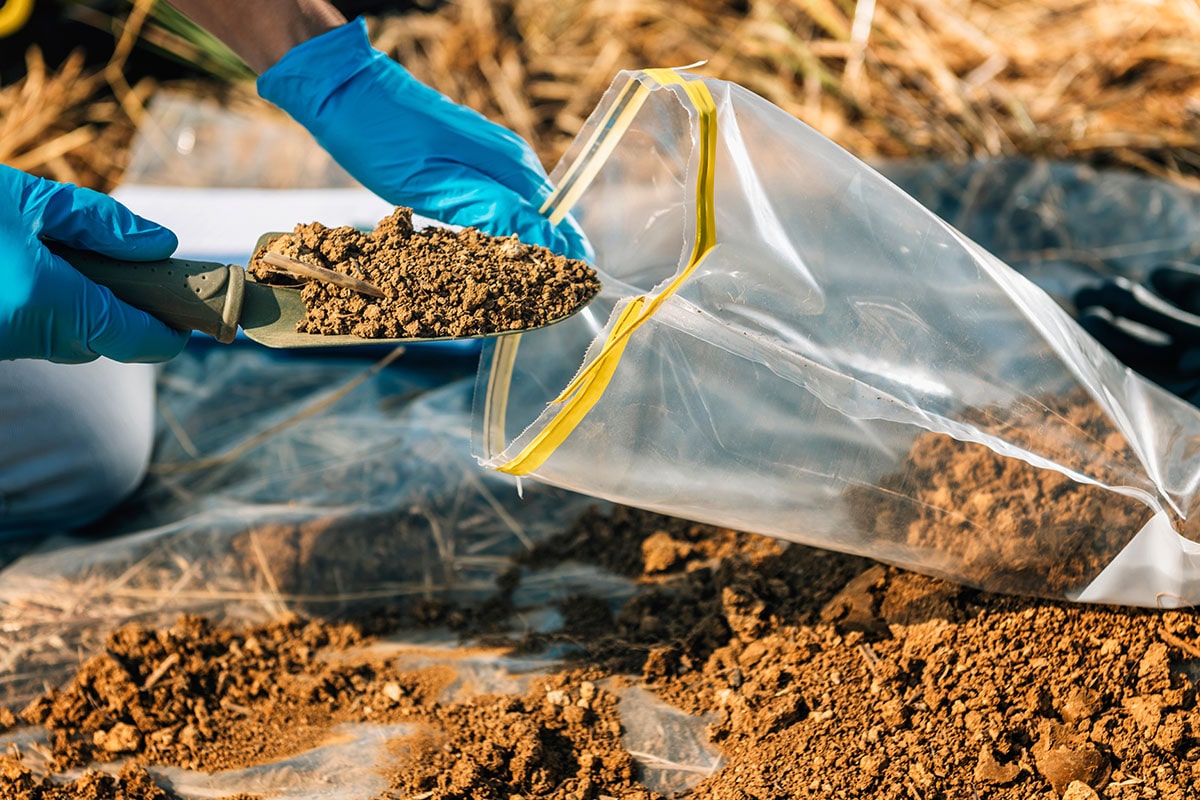
- Decide where you will collect your soil.
- Based on where you choose to collect the soil, what do you expect to find in it? Write down some of your ideas on your Soil Investigation Worksheet.
- Use a small shovel to excavate the top two inches of soil and place the soil (about one cup) into a plastic bag. This soil will be used in the next two activities.
- Add location information and observations to your Soil Investigation Worksheet. Be sure to add contextual information about the area. What is the area being used for? Is the ground’s surface bare or covered with grass? Can you see anything living in the soil as you dig for your sample?
- Take a look at a bit of your sample and write down your observations. What colors do you see? (See this color reference.) Do all the particles look the same? Is it clumpy? Can you see any living things in it?)
Like we learned above, a soil’s matrix has four major components. The specific components are often dictated by the location of the soil, and relate directly to the role it plays in an environment. You have your soil sample, now let’s find out more about it!
Use your Soil Investigation Worksheet to collect your observations during each of the following investigations.
Step One: Visual Examination
Let’s start by looking at the soil sample that you collected. Look at it using a magnifying glass, touch it, smell it. What observations can you make about it?
- What did you find in your soil sample?
- Did you notice any particular shapes, colors, or textures?
- Is there anything living in it?
The next two activities get messy, so cover your work surface with something you can wash or easily throw away.
Step Two: Shake Test
One of the characteristics of 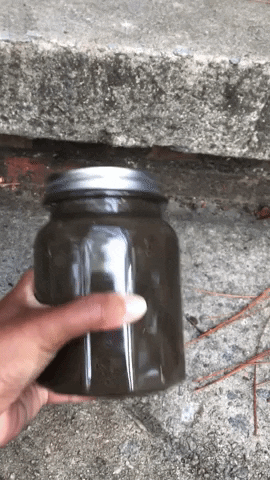 soil type is texture–the ratio of the mineral components in a soil sample. Let’s separate the different mineral types in a soil sample and determine the percentage of sand, silt, and clay. Before you begin, split your soil sample into two parts, placing one half of your sample into a jar, and leaving the other half in a plastic baggie for the next soil texture experiment.
soil type is texture–the ratio of the mineral components in a soil sample. Let’s separate the different mineral types in a soil sample and determine the percentage of sand, silt, and clay. Before you begin, split your soil sample into two parts, placing one half of your sample into a jar, and leaving the other half in a plastic baggie for the next soil texture experiment.
Materials
- Clear jar that holds 8 to 12 ounces
- Soil sample
- Water
- Ruler
- Dry erase or wet erase marker
- Soil Investigation Worksheet
- Soil Texture Triangle
Directions
- Fill a glass jar halfway with soil from your sample. Fill the remaining half of the jar with water.
- Tighten the lid on the jar and shake until the soil and water are well-mixed.
- Put the jar on a table and let the soil settle for 1-2 minutes. (This time is sufficient for your observations, but you can leave the sample overnight to allow sediments to fully settle.)
- Mark the top of each level of soil on the jar using a dry erase or wet erase marker.
- Measure the distance from the bottom of the jar to the first mark in inches. These are the sand particles. Make note of the distance on your Soil Investigation Worksheet.
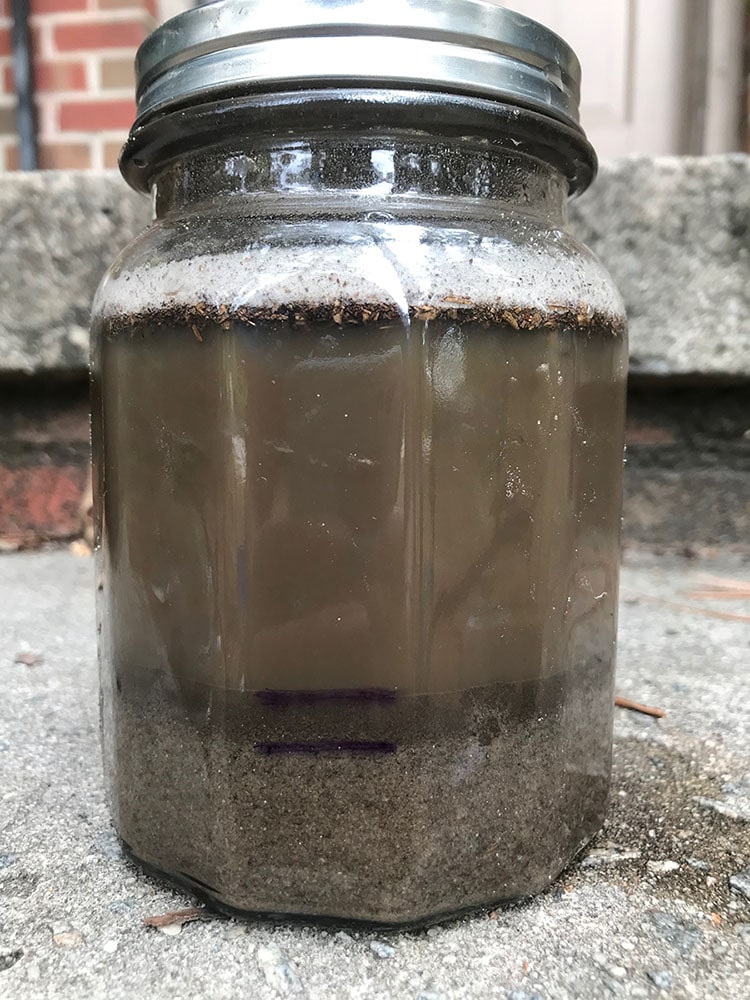
Credit: Chenille Williams - Measure the distance from the first mark to the second mark. These are the silt particles. Make note of the distance on your Soil Investigation Worksheet.
- Measure the distance from the second mark to the third mark. These are the clay particles. Make note of the distance on your Soil Investigation Worksheet.
- Measure the distance from the bottom to the third mark up from the bottom. This is the total soil sample.
- Convert the fractions into decimals and write them on your Soil Investigation Worksheet.
- Calculate the percentages of sand, silt, and clay for the sample. For example, divide the mark distance from step five for sand by the total sample distance from step eight, then multiply by 100. This will give you the percentage of sand in the sample. Repeat for clay and silt.
- Use the Soil Texture Triangle to determine a more precise description of soil texture based on the percent sand, silt, and clay.
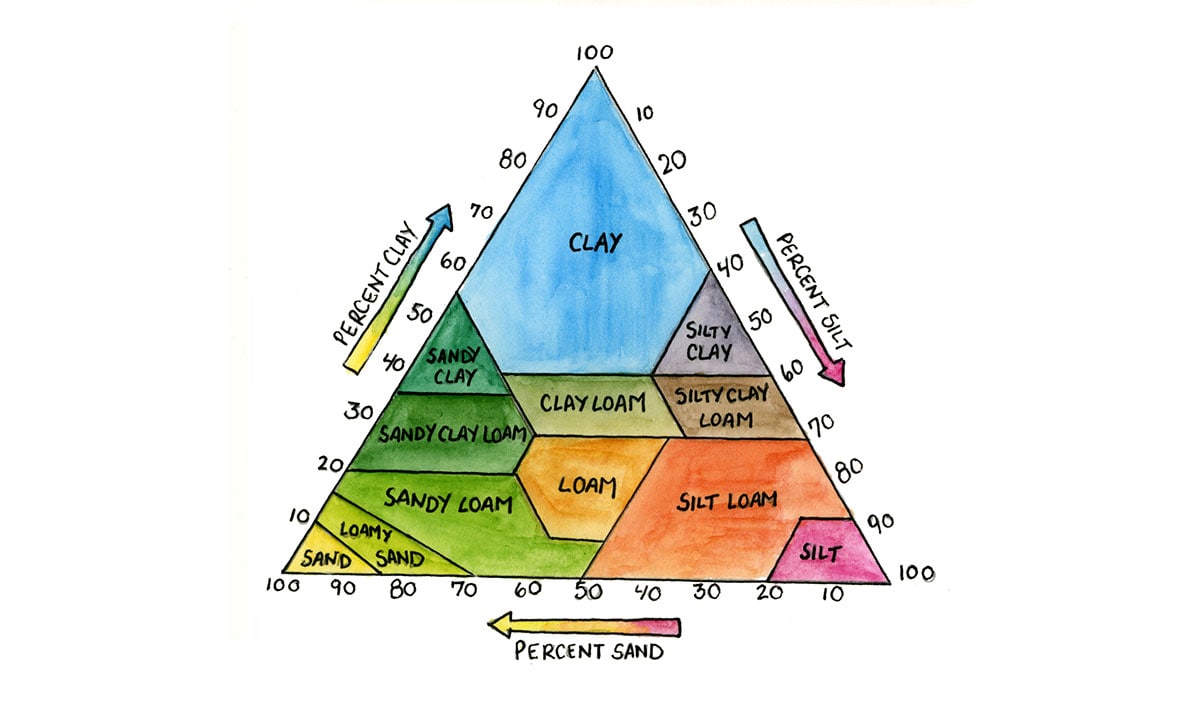
The soil texture triangle allows you to use the fractions you just identified to describe your sample and determine the soil texture. You can even see how the percentage of sand, silt, and clay in your soil sample compare to the ratio of mineral types in other soil textures!
Reflection Questions
- What do you notice about the different layers in the jar?
- What is the percentage of sand?
- What is the percentage of silt and clay?
- What is the soil texture of your sample, based on the texture triangle above?
- Draw a picture of the soil particles the way they look in the jar
Step Three: Ball And Ribbon Test
Soil texture mixtures can be categorized by touch as well as sight. When you looked at the soil texture triangle, you probably noticed that when different ratios of particles mix together, the resulting soil textures are different. Soil scientists use two additional tests—the ball test and ribbon test—to help them further describe the texture of soil samples.
You’ll perform these tests using the flow chart and video below to further describe the texture of your soil sample. Use the flowchart and the videos to help you conduct each test.
Use the Ball & Ribbon Flowchart (pictured below) to determine your soil’s texture by touch.
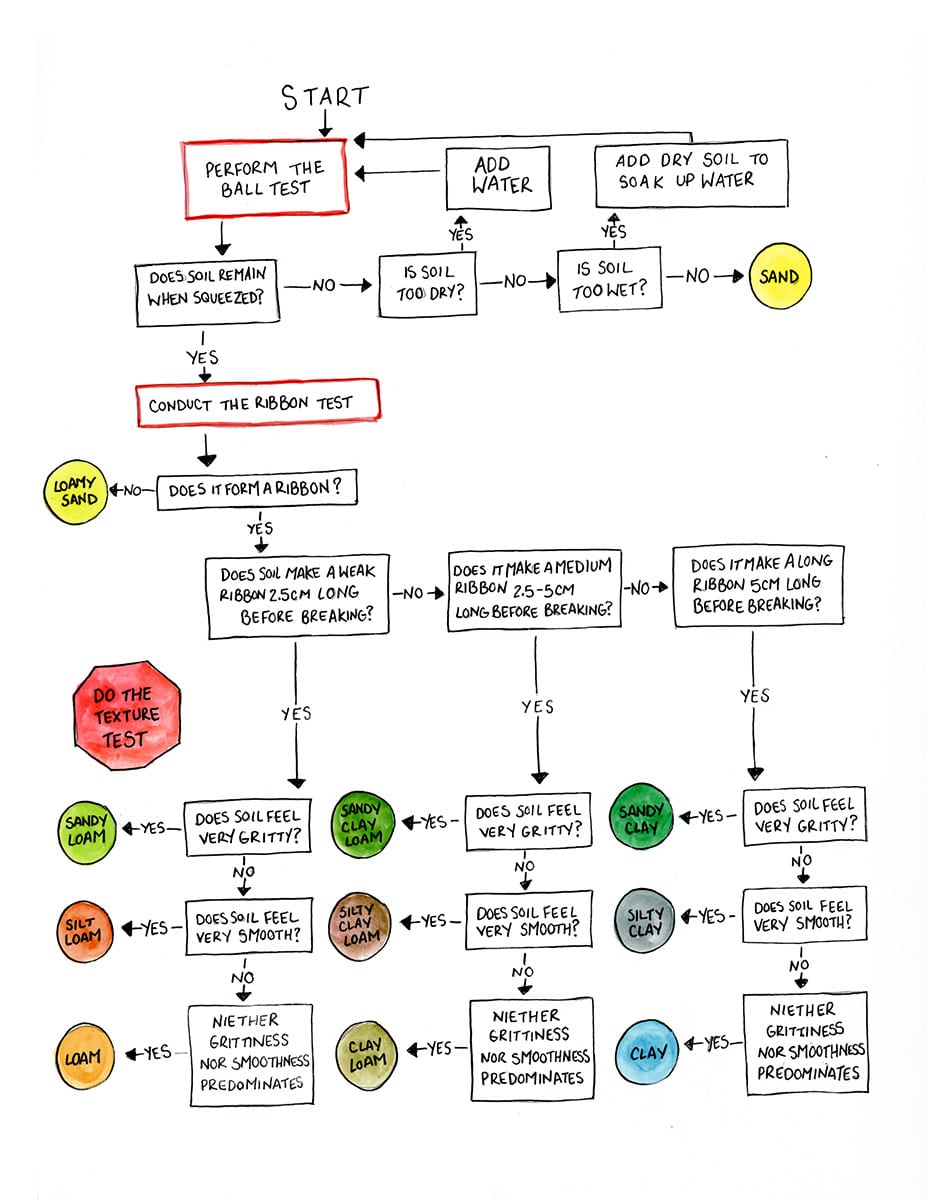
You can use this soil test video from UC Davis for further guidance about how to do the ball and ribbon test.
Reflection Questions
- How did the soil in your sample feel?
- What particle sizes did you notice?
- What was the texture of your soil sample based on the test flowchart above?
“…if you think about soil, it’s kind of a matrix of particles. And those aggregates being really critical to having good space in the soil for roots to grow, for water to infiltrate.” —Andrea Basche, Science Friday 2018
Soil Matrices Formed By Soil Textures
Soil can be described as a matrix, with different spaces between the particles of soil, depending on the density of the soil pieces. As a matrix, soil is an environment in which physical and biological processes, water drainage, and nutrient uptake, can occur. Within the matrix, plants need space between soil particles in order for their roots to grow and receive nutrients.

Which soil textures do you think are easy for roots to grow in? Which soil textures do you think would allow water to move easily through?
Soil Setting Categorization
We’ve been looking at soil closely. Now let’s look at how it came to be the way it is, wherever it is. Soil texture varies by location and has changed over time in each location. The soil at the top of a hill in a forest is very different from the soil at the beach, and both are different from the soil in a garden. The location of the soil can also determine how the soil functions in the environment. Look at the map of South Carolina below. Each of the different ecoregions–areas defined by a specific type of geography–appears as a different color. Soil also varies across the state of South Carolina, influencing the plants and organisms that live in each ecoregion as well as the different purposes soil has for human use.
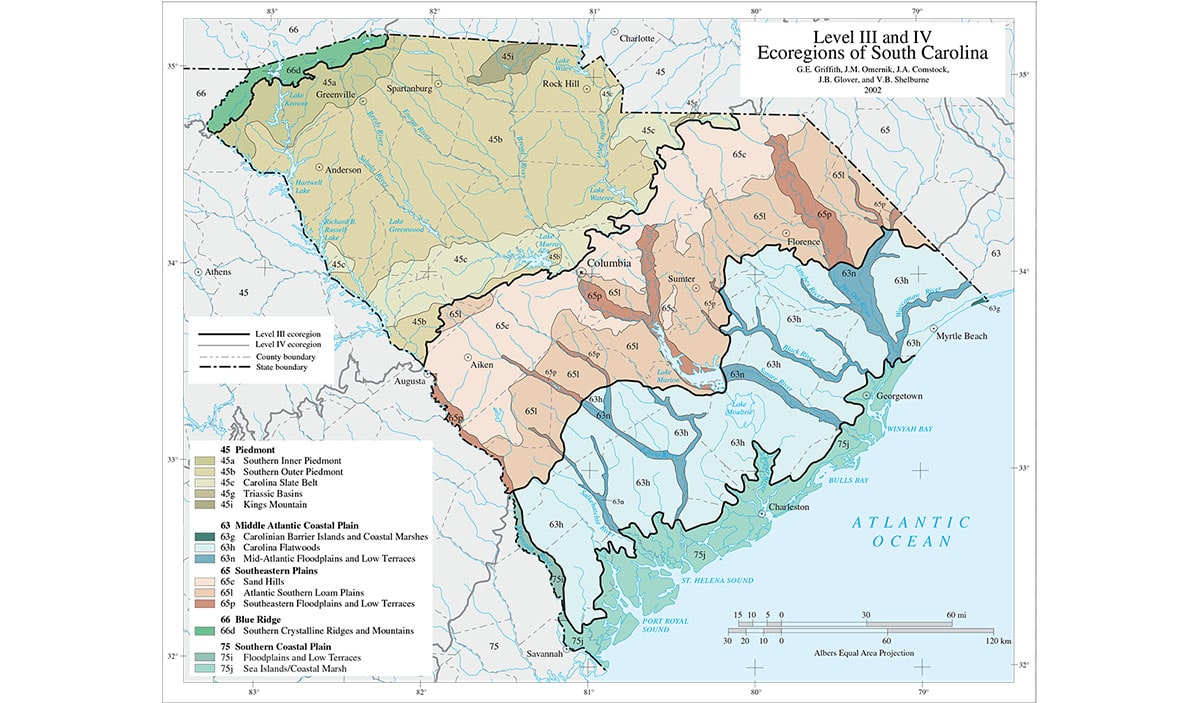
Take a closer look at the map and add your thoughts to the Soil Setting Characterization Worksheet.
Reflection Questions (click the link under the image to see a larger version of the map)
- What kinds of soil do you expect to see in each area? Why?
- Think generally. What are some ways that humans use soil?
- Make a prediction. What soil types are in the area around you? What makes you think that?
Curious? Find out more about ecoregions in other areas of the United States.
You As A Soil Engineer!
Soil is found everywhere—in parks, in the forest, on the beach. Some soil textures are naturally occurring, but some textures are engineered by people for a specific purpose, like improving drainage, supporting the weight of heavy vehicles, providing nutrients for microbes, or allowing tree roots to grow in urban environments. Where would you expect to find soils that were created for a specific purpose by people?
You’re taking on the role of a soil engineer—someone who creates different soil matrices for particular purposes—and determine the soil matrix in several settings.
You will decide the roles that soil plays in a set of scenarios given below, and draw the soil texture in a matrix that you think will best serve that specific role. Using the information you learned in the investigation of soil textures, name the textures you would expect to find in each of the following settings: a rain garden, an aquifer, a wetland, a garden, a forest, a prairie, and farmland. The soil in each of these settings has a different role in supporting the life that lives there.
Use the Soil Setting Characterization Worksheet to record your determination of the soil texture and role of soil for each of the settings.
For each setting shown, answer the following questions:
- What is the role of soil in each of the settings shown in the slides above?
- What is the ideal soil texture? (Draw a close-up view of your prediction for what you think the ideal soil texture would look like in each of those settings.)
- Explain why you selected that soil texture.
- What other components would you expect to find that were unique to that setting? Why?
How Do Different Soils Interact With Water?
We already discussed that soil is a matrix of different particle sizes, organic matter, air, and water. In between the soil particles are spaces, called pore spaces. Larger particles usually leave larger gaps between one another in a soil matrix, so the pore size tends to be larger with larger particle size. These pore spaces between particles are where air and water are found in soil. Look at the illustrations of soil particles in soil samples below. Rank the pore sizes from largest to smallest based on the particle size indicated in each.


Gravity and atmospheric pressure cause water to move through the pore spaces in the soil. Soil textures with a higher percentage of sand drain water faster than soils with a high percentage of clay. Why?
Because of their varying pore space sizes, soils with different particle sizes drain water at different rates. Watch the video to see the difference in drainage rates between a soil made of mostly sand (large particles) and a soil made of mostly silty clay (small particles).
Reevaluate Your Soil Setting Characterization
Now that you know more about how soils drain, let’s reexamine the textures that you drew for your Soil Setting Characterization.
Reflection Questions
- Would you change anything about the soil texture you chose for the setting? Why? If so, write the name or draw a picture of the soil texture type you think would be best.
- What ratio of mineral components would the soil have? Why?
The Future Of Soil Under A Changing Climate
Climate Change And Soil
Climate change has brought increased heat, increased rain, drought, severe storms, and many other altered weather patterns that affect the soil in ways that impact plant growth. Changes in soil temperature as a result of climate change impact decomposition rates and the amount of water available in the soil. As soil is lost through erosion and plants are unable to thrive due to a lack of available soil water, there is less organic matter stored in the soil, which also affects soil structure and stability—two important factors needed for plants to thrive.
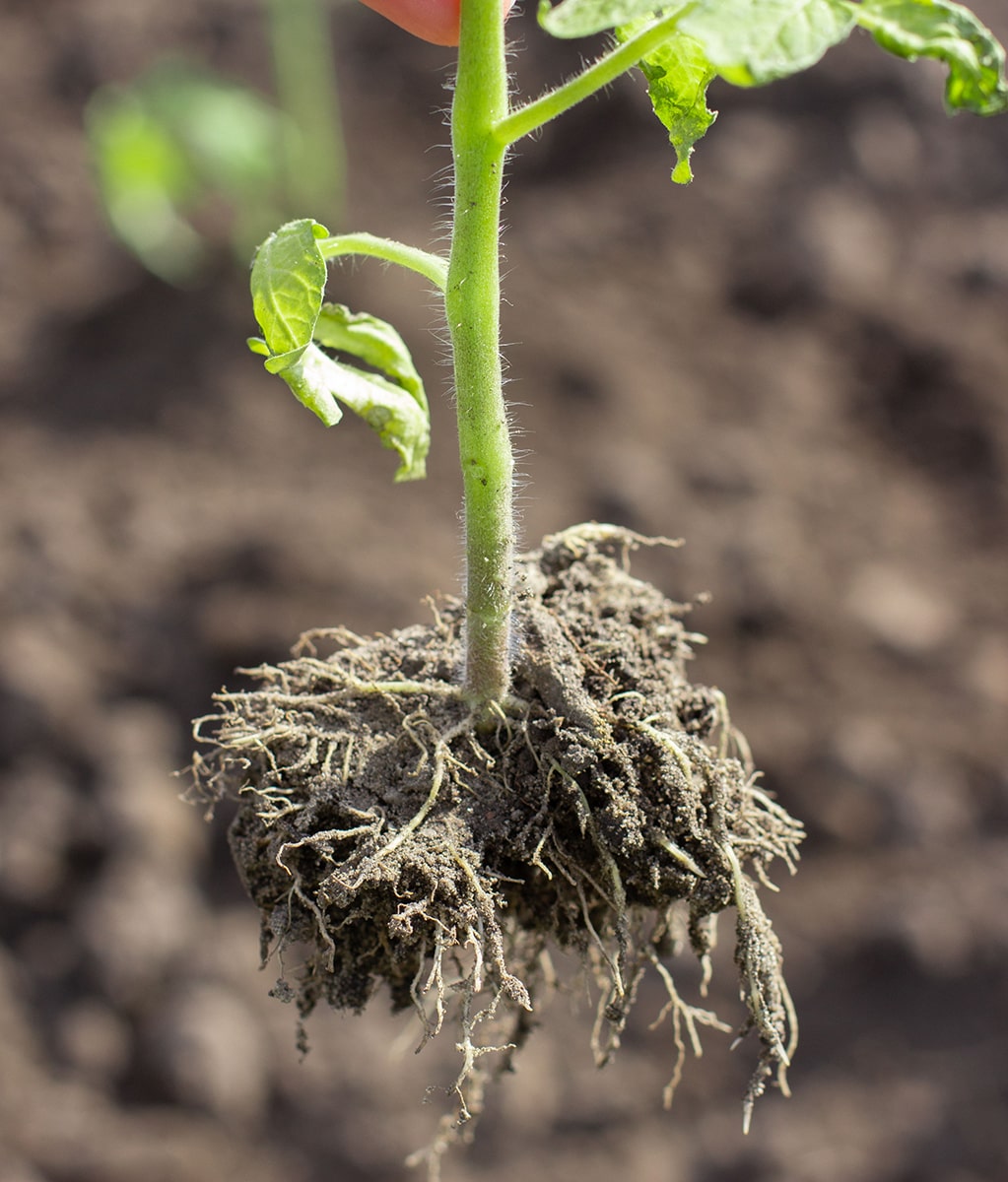
Discuss or consider the following:
- How do you think soil texture might change with changes in climate? Think about heavy rain, drought, extreme heat, or forest fires, and any other signs of climate change.
- Which soil textures will be unchanged during a drought? Why?
- Which soil textures will be unchanged by heavy rain? Why?
- If soil texture changes over time, how might that change the soil’s ability to serve its role? Provide an example of how changes in the soil might affect its ability to serve a role in the ecosystem.
- How can we prepare for climate change and have healthy soil?
The Impact Of Climate Change On Soil
During the Dust Bowl in the 1930s, over 150 million acres of topsoil were eroded by the wind as a result of overfarming and drought, but wind and a lack of rain aren’t the only factors that are harmful to soil structure. Maintaining soil structure is important for growing healthy plants and preventing erosion. Both poor soil structure and erosion can decrease the amount of healthy soil available for plants to grow and take in water and nutrients.
In an interview with Science Friday, Andrea Basche, an assistant professor of agronomy and horticulture at the University of Nebraska, and Kristen DeAngelis, an associate professor of microbiology at the University of Massachusetts, Amherst discuss how too much rain can actually be damaging to the soil. According to Basche,
“The force of rainfall hitting the soil can break up the good aggregation that you have. And those soil aggregates–if you think about soil, it’s kind of a matrix of particles. And those aggregates being really critical to having good space for roots to grow, for water to infiltrate. As you have declining structure, you have less opportunity for good crop production”.
Discuss or consider the following:
- Why does damage to the soil affect the growth of plant life?
- How does the breakdown of soil aggregates (soil matrices) impact crop production?
- In what other ways can damage to soil impact the world around us?
The National Climate Assessment provides data about how climate has impacted our landscape. According to the report, “Summer heat stress is projected to reduce crop productivity, especially when coupled with increased drought.” Just as drought was a contributing factor to the Dust Bowl, recent droughts can impact a plant’s ability to tolerate heat while not having enough water available to thrive. That heat stress partially comes from an increased amount of heat in the soil.
Discuss or consider the following:
- What can farmers do to prevent crop loss as a result of climate change?
- How will climate change impact the soil you engineered?
- Would the soil you engineered still be able to fulfill the same role in the environment after the climate change impacts described above? Would its role remain unchanged over time? Why or why not?
- How could you change the texture of your soil to be more resistant to erosion from wind? What about erosion from water? How could you change the texture to meet those needs?
As the effects of climate change intensify over time, there is a need to think outside of the box with different ways we use soil and how soil could be beneficial to sustaining our way of life. What can humans do in the future to ensure soil is still functional?
New Technologies For Soil Conservation
There is already a need to develop technologies that will help conserve soils for the future. Many soil scientists are researching ways to create soils that will remain healthy while meeting the demands of human needs and withstanding the impacts of climate change. These technologies include incorporating microbes into an engineered matrix to help improve soil strength and permeability and coming up with solutions to maintain soil temperatures that are suitable for sustaining microbial life and maintaining plant root health. By designing these ideal soils, scientists can move towards ensuring soils will remain healthy under varying conditions.
Which new technologies do you think will be most helpful in conserving soils? Will they work better in some places than in others?
Keep Learning About Soil
- Soil Organic Matter (Aggregate Stability)
- Learn The Story Of Soil In Your State
- Porosity And Permeability Lab
- Perkin’ Through The Pores Lab
- Erosion Investigation
- Climate Change Impacts On Ecosystem Services
- Soil Biology and the Landscape
Next Generation Science Standards
This resource can be used to work towards the following NGSS Performance Expectations:
MS-ESS2-1: Develop a model to describe the cycling of Earth’s materials and the flow of energy that drives this process.
MS-ESS3-1: Construct a scientific explanation based on evidence for how the uneven distributions of Earth’s mineral, energy, and groundwater resources are the result of past and current geoscience processes.
MS-ESS3-3: Apply scientific principles to design a method for monitoring and minimizing a human impact on the environment.
Science and Engineering Practices: Analyzing and Interpreting Data, Constructing Explanations and Designing Solutions
Crosscutting Concepts: Structure and Function, Stability and Change
Credits:
Written by Chenille Williams
Edits by Shirley Campbell and Xochitl Garcia
Reviewed by: Jessica Metz, Laura Diaz, Jennifer Powers, Hillary Gutierrez, Samantha Adams, and Marta Toran
Digital Production by Xochitl Garcia
Meet the Writer
About Chenille Williams
Chenille H. Williams is the education program coordinator for Richland County Stormwater Management in Columbia, S.C., she teaches students, professionals, educators, and homeowners about water quality issues and how to prevent surface water pollution through a blend of workshops, presentations, and community partnerships. Outside of being an educator, Chenille is a visual artist and loves learning about the fermentation process of kombucha.
